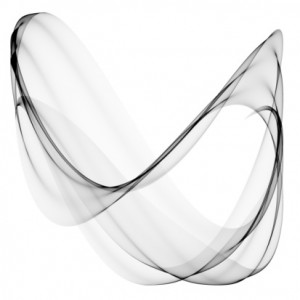Relationship Differences: Fusion and De/fusion (Part 19)
By Asher Crispe: January 23, 2013: Category Inspirations, Quilt of Translations
 How does one aspect of Divinity relate to another? Much of Kabbalah is occupied with the work of yichudim or making ‘unifications’ within the sefirot or channels of Divine revelation. Reflecting on this task puts us in the position of having to facilitate marriages within our consciousness of Divinity so that we can come to experience the inner integration of all of the dimensions of Reality. To us, this resembles a situation where God relates to Himself. From our perspective, it is as though the Creator has identity issues: how can He be both transcendent and immanent within Creation at the same time? Each of these identities emerges from out of a specific relationship which we become attuned to and tag with different names. The interaction of these Divine name-identities compares with a person who is trying to come to terms with diverse personality traits, none of which get at the essence of the person but are more comparable to the clothes one wears. By wanting to avoid a wardrobe malfunction or a fashion faux pas, it compulsory to figure out how to dress properly such that the garments work well together. Most specifically, the combination has to work. This would be analogous to God relating to Himself or rather one manifestation of Divinity marrying another manifestation of Divinity, like in the case of the Shekhinah or Divine presence as Bride below uniting with the Holy One or Groom above.
How does one aspect of Divinity relate to another? Much of Kabbalah is occupied with the work of yichudim or making ‘unifications’ within the sefirot or channels of Divine revelation. Reflecting on this task puts us in the position of having to facilitate marriages within our consciousness of Divinity so that we can come to experience the inner integration of all of the dimensions of Reality. To us, this resembles a situation where God relates to Himself. From our perspective, it is as though the Creator has identity issues: how can He be both transcendent and immanent within Creation at the same time? Each of these identities emerges from out of a specific relationship which we become attuned to and tag with different names. The interaction of these Divine name-identities compares with a person who is trying to come to terms with diverse personality traits, none of which get at the essence of the person but are more comparable to the clothes one wears. By wanting to avoid a wardrobe malfunction or a fashion faux pas, it compulsory to figure out how to dress properly such that the garments work well together. Most specifically, the combination has to work. This would be analogous to God relating to Himself or rather one manifestation of Divinity marrying another manifestation of Divinity, like in the case of the Shekhinah or Divine presence as Bride below uniting with the Holy One or Groom above.
All of this Theo-drama is enacted within the Divine. The conflict is staged and overcome within our consciousness as opposed to within the Creator. The show He puts on begins with Creation as a ‘self-othering’ process within the Divine. Divine revelations are all expressions to an outside (Creation itself opens up the possibility of a radical outside), to an other. Yet all of this expression simultaneously takes place within the Creator. There is no real outside, only a simulated one that occurs inside the Divine. Thus, the very first mark of Creation which is recorded in the Torah (Genesis 1:1) is the letter Beit in the word bereshit (‘in the beginning’) which is a prefix meaning ‘in.’ A Beit also means a ‘house’ (bayit) an enclosure or primal form of ‘in-ness.’ Everything that follows takes place with this ‘in’ (within or with/in) the Creator. He is host to it all. Reality is a spacing or opening of self-relation with/in the Divine. Reshit or ‘beginning’ is in the feminine form which comes to tell us that this primal ‘in-ness’ –the introversion or interiorization–effectively turns in or back on itself and in so doing constitutes a feminine receptacle or vessel which provides the groundwork for further ‘externalization.’
The verse continues and states that Elokim (which is the Divine name that designates nature [Elokim = 86 = hateva “nature”] or Divine immanence) was created (bara Elokim and not as normally thought that ‘God created the heavens and the earth’ but rather that this Divine name is brought out and explicated). Here the verb ‘bara’ (created) has ‘bar’ or ‘outside’ as its sub-root. Hence, the first aspect of Creation is an ‘immanent otherness’ or ‘nature’ that would seem to be independent and exterior to, the Divine Oneness prior to Creation. Everything that follows in the natural world would be a consequence of this inception of otherness.
Architecturally, the verse is structuring the Divine economy in such a way as to place the outside in the inside whereby everything created happens within. Becoming aware of the ‘outside-in’ and ‘inside-out’ character of Reality would be comparable to the interstitial in a building. An example of this might be when I design a garden–which is a sign of the great outdoors–as the main attraction for the center of my hotel dining room which one arrives at after traversing the lobby and several antechambers and hallways. It is the most interior room which is experienced as the essence of being inside. Nonetheless, the garden I placed within it reminds me of being outdoors. The blurring of the outside/inside distinction which is accomplished with interstitial architecture is therefore reminiscent of the inaugural act of Creation.
‘Being-out-on-our-own’ would be a possibility afforded to us via the tzimtzum or Divine contraction that brought about a semblance of ‘self-othering.’ Commensurate with this, we still remain in a state of ‘being-in-God.’ How do we reconcile these extremes of our reality? Is this not the ‘marriage paradox’ par excellence? What we have drafted is a proposal for “being-‘other’-in” a relationship. When it becomes apparent that all this is staged as a self-reflexive action of the Creator (it’s all God doing it to Himself), then we can summarize all immanent-otherness under the name Elokim (nature). Before Elokim becomes ‘Mother-Nature’ ‘She’ must first wed the transcendent aspect of Divinity called Havayah (the Tetragrammaton which, once again, signifies Being or God beyond nature). Havayah, therefore, connotes the transcendent aspect of Divinity (the Groom).
According to Kabbalah, prior to Creation the name that was revealed was the transcendent aspect of Divinity (Havayah) and the immanent aspect remained concealed (Elokim). In a stunning role reversal, Creation brought about a new emphasis in this relationship: the immanent aspect would become revealed (and thus we mostly, if not exclusively, are conscious of the name Elokim or the natural world) and the transcendent aspect became hidden. Hence, in the apparent absence of Havayah we have trouble believing in, much less detecting, the super-natural. Another implication of this shift is that it solidified the distinction and ‘real’ otherness between these two Divine names. The natural and the supernatural were suddenly two separate kinds of phenomena that could not be thought of, much less experienced, together. Our Cartesian compromise was to divorce these name-identities–after all, historically speaking, they seemed to have had a rocky marriage. Once we are habituated to the divorce, then the prospects of their remarriage would appear dimmer and dimmer. Since most have gravitated to Elokim or nature (the Mother received custody of the kids) we might even forget that we had a ‘Father’ or that we were the offspring of a transcendent-immanent marriage ([Genesis 2:7] “And Havayah Elokim formed the man…”).
According to the Alter Rebbe (Rabbi Schneur Zalman of Liadi in Ma’amori Admor HaZaken al Parshiot Ha-Torah V’Moadim Volume 1 pp.44-55), the verse that established the need for marriage (Genesis 2:18)“…It is not good for man to be alone: I will make for him a helper opposite him [לא טוב היות האדם לבדו אעשה לו עזר כנגדו]” actually begins with the phase “Havayah Elokim said….” This is never so simple as the literal rendering: ‘God said.’ What the mystical dimension brings to enhance our understanding of the verse is an additional layer of information so that when we reread it we can now say: “the teaming of the transcendent (Havayah) and immanent (Elokim) aspects of Divinity expresses the situation of overcoming loneliness through marriage.
 Here, ‘va’yomer’ literally means ‘said’ but it is a composite of the word ‘yomer’ or ‘will say’ and the Vav ha’hipuch–the Vav of ‘reversal’ or ‘transformation.’ Adding this prefix effectuates the temporal reordering of the expression–a future performance is now slated for the past. Actions travel across time. Such ‘sayings’ have a transtemporal relevance. This both was, is and will be the case. Havayah, according to the Alter Rebbe, parallels ‘the man’ or more properly speaking ‘The Man,’ the Macroanthropos of this Divine persona. The transcendent aspect of Divinity, once likened to the solitary subject, is qualified as being in a negative condition (“…it is not good for The Man [Havayah] to be all alone…”). In response, the cosmological reading of the verse in this Chassidic text continues and asserts that the solution (“…I will make a helper opposite for Him…”) actually involves the construction of the natural world and the presentation of Elokim as a mate to the aspect of Hayavah. Creation is all a Divine marriage. It may be looked upon as nothing more than the wedding of the transcendent and immanent (Havayah and Elokim) aspects of Divinity, a hieros gamos or ‘Holy Wedding,’ not between different deities as is often the mistaken impression which concretizes and reifies this relationship, but abstractly between Divine names.
Here, ‘va’yomer’ literally means ‘said’ but it is a composite of the word ‘yomer’ or ‘will say’ and the Vav ha’hipuch–the Vav of ‘reversal’ or ‘transformation.’ Adding this prefix effectuates the temporal reordering of the expression–a future performance is now slated for the past. Actions travel across time. Such ‘sayings’ have a transtemporal relevance. This both was, is and will be the case. Havayah, according to the Alter Rebbe, parallels ‘the man’ or more properly speaking ‘The Man,’ the Macroanthropos of this Divine persona. The transcendent aspect of Divinity, once likened to the solitary subject, is qualified as being in a negative condition (“…it is not good for The Man [Havayah] to be all alone…”). In response, the cosmological reading of the verse in this Chassidic text continues and asserts that the solution (“…I will make a helper opposite for Him…”) actually involves the construction of the natural world and the presentation of Elokim as a mate to the aspect of Hayavah. Creation is all a Divine marriage. It may be looked upon as nothing more than the wedding of the transcendent and immanent (Havayah and Elokim) aspects of Divinity, a hieros gamos or ‘Holy Wedding,’ not between different deities as is often the mistaken impression which concretizes and reifies this relationship, but abstractly between Divine names.
If this is the case, then the fourfold set of relationships that we dealt with in the realm of the interpersonal and intrapersonal (as well as between self and the Divine) can now be reinterpreted within the scheme of these two Divine names as we will continue to show in Part Twenty.
http://www.interinclusion.org/inspirations/relationship-differences-fusion-and-defusion-part-20/
http://www.interinclusion.org/inspirations/relationship-differences-fusion-and-defusion-part-18/
Relationship Differences: Fusion and De/fusion (Part 19),














;)
;)
;)
;)
;)
;)
;)
;)
;)
;)

